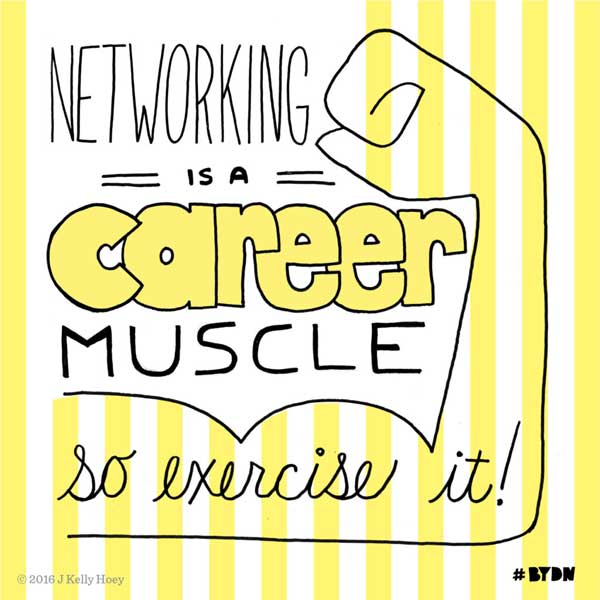Before You Start Networking
First impressions are formed at the first encounter and thanks to social networks, your first impression is made before the informational interview or initial meeting is even scheduled – so start your professional networking off strong by polishing up your online profile(s).
LinkedIn dominates the “professional” networking space so ensure you have created and completed your LinkedIn profile.
If you’re networking to find a job, the keywords you use in the “Title” and “About” sections of your LinkedIn profile are critical. Think about the role you’re seeking, how do professionals in your chosen field describe themselves? Read job postings/descriptions if you need keyword guidance or prompts to include in your profile.
Check Your Privacy Settings! Your profiles on other social networking platforms may include information you don’t necessarily want to share with future employers.
Pro Tip: ensure your CV or resume aligns (dates, descriptions) with your LinkedIn profile as these are candidate details recruiters check!
Be Generous When You Post
Whether online or off-line, the foundation of networking is generosity. If you want to make and maintain meaningful connections, you need to be generous. Think about how the information you’re sharing may help a friend (or the person you want to build a connection with).
Three easy ways to be generous when networking online:
- Pass along articles or blogs of interest.
- Highlight the programs or events you’ve signed up for.
- Comment on posts of others.
Research Before Reaching Out
Don’t rely on an email template or sample cover letter! Stand out from the job-seeking crowd by using your critical thinking skills to research the people you’re seeking to meet and/or deeply understand the opportunities you’re apply for. If busy people take the time to blog, podcast or tweet, it likely means they care about the subject matter – so use their published content to your career advantage.
Before sending out a cover letter or request for a “coffee date” you should, at a minimum:
- Follow the company or individual on LinkedIn (and Twitter)
- Subscribe to newsletter(s) the company or individual publishes.
- Sign-up for any webinars the company or organization hosts.
- Listen to their podcast(s) or podcast interviews – or listen in when they’re hosting a room on Clubhouse.
- Read or watch any interviews they have conducted.
This background research will help you customize every outreach by revealing the common points of interest and/or showing a company you have a true understanding of what’s critical in their industry right now.
Recommended reading: pages 59 to 64 of Build Your Dream Network as Jessica Peltz-Zatulove’s approach to conducting a job-search when you don’t have industry connections is the roadmap to follow!
Pro Tip: Hashtags are a great research tool to find communities and the conversations happening right now in the industry or profession you’re pursuing. You can search and follow hashtags on social platforms (i.e. LinkedIn, Twitter, Instagram) and platforms with a social layer (i.e. Peloton).
Network Building Etiquette Matters – Even Online
Just because you can swiftly follow, click and/or swipe does not mean you have a “true” ask-for-a-favor connection. Build a strong professional reputation by showing up consistently and by:
- Being responsive (to emails, RSVPs for events etc.).
- Personalizing your communications (from requests to connect to cover-letters).
- Arriving on time for meetings (even when those meetings occur online).
- Offering to help (not always asking for assistance).
- Following-up when someone provides guidance and following-through on commitments you make.
Recommended reading, pulled from Chapter 7 of Build Your Dream Network (Networking #Fail):
- Oversharing (page 204)
- Following without Following Up (page 206)
- Nothing to Say? – Good (page 207)
- Not Saying Thank You (page 211)
Need more? Check out these posts:


